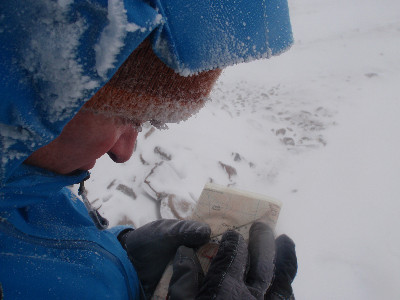By Heather Morning, Mountain Safety Advisor

The winter months see the mountains at their most dramatic. Nothing beats those calm winter days with the snow-covered mountains etched against a cobalt blue sky and just shouting out to be climbed. But should you?
The answer is a big fat ‘YES’, followed by an equal big fat ‘YOU NEED TO BE PREPARED’.
The rewards in winter are great, but the mountains pose their own challenges, and the key is for us to be well prepared for them.
Do your homework before you head out by checking a mountain-specific weather forecast and the excellent resources on the Scottish Avalanche Information Service (SAIS) website. Take the time to dig deeply into the information on the SAIS pages and learn how to avoid potentially dangerous areas. Taking note of the wind speed and direction from the weather forecasts is vital for a successful day. Make sure your journey on the high ground is planned with the wind behind you and remember that wind speeds of 35-40 mph will start to affect your balance and stability. Winds more than 60mph are not unusual and will likely mean choosing a lower route.
Additional kit is vital for your winter adventures. Put those bendy summer boots away and invest in a rigid-soled boot which will give support and a good ‘edge’ for travelling on snow covered terrain. Adding an ice axe and crampons is essential – as, of course, is gaining the knowledge of how to use them. Best to treat yourself to a winter skills course to learn the basics.
If visibility is poor and the ground snow-covered, navigation is challenging and potentially life-threating if you are near a corniced edge. Map and compass are essential, as is the skill to use them efficiently in poor visibility. Practice your skills in a low-level environment before you need them ‘in anger’ on the mountain. Again, a short course can be very beneficial and definitely money well spent.
Be conservative. A round of four Munros in summer conditions may be very achievable, but in winter, with high winds and deep snow cover, your normal 4km-an-hour pace could be reduced to less than 1km.
And take a progressive approach. Chose to develop your winter experience on lower, less steep and craggy mountains before you venture onto more serious, consequential ground.
You can find out a lot more information and detailed advice on winter mountaineering in the #ThinkWINTER section of our website